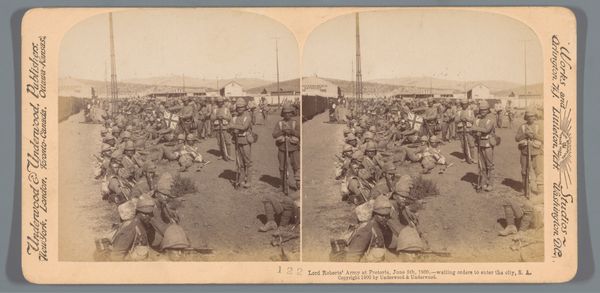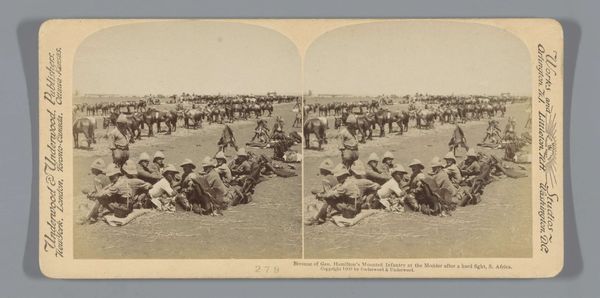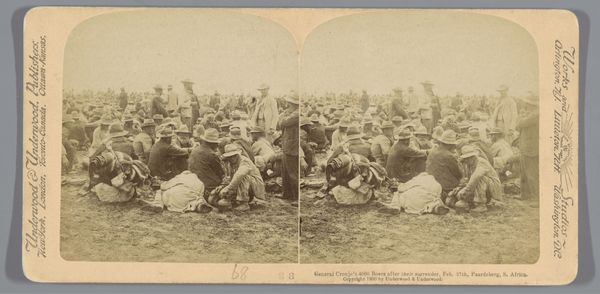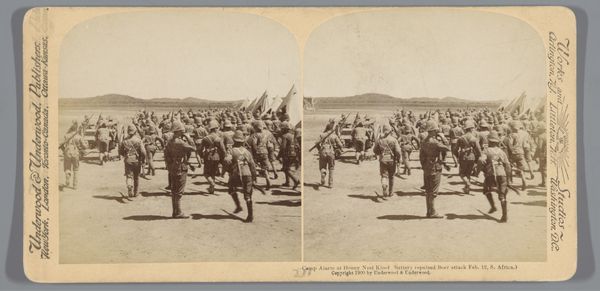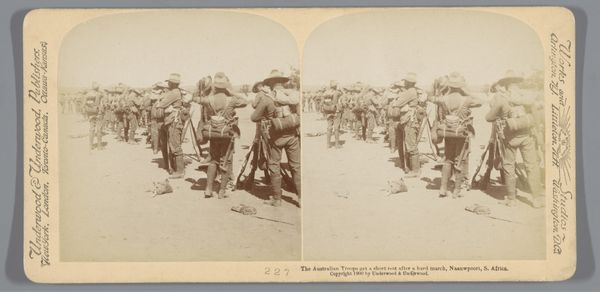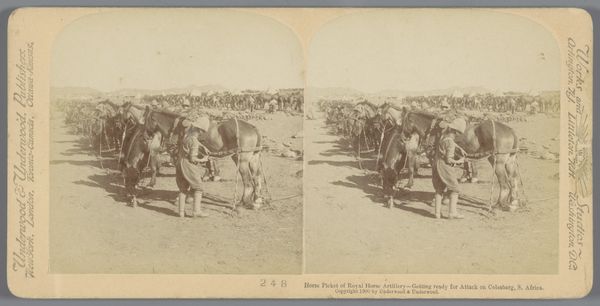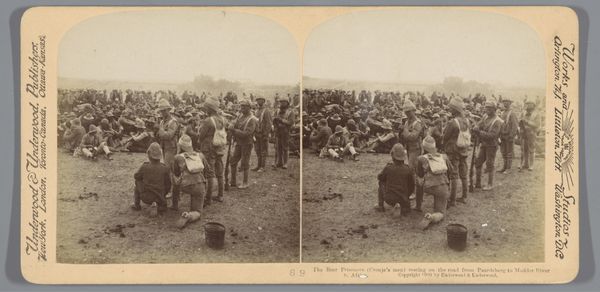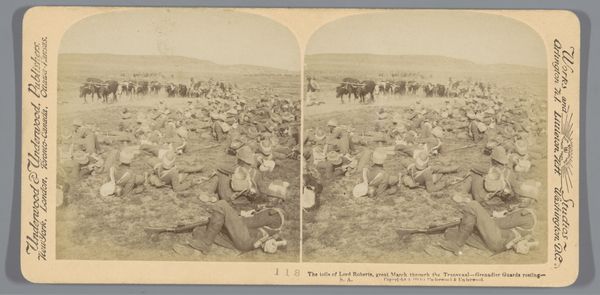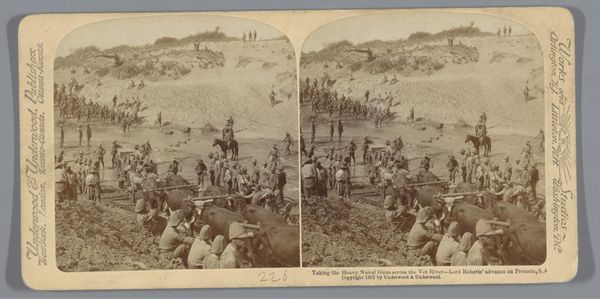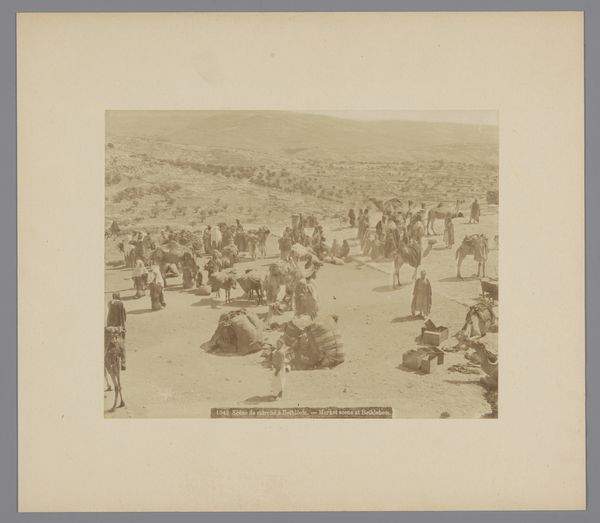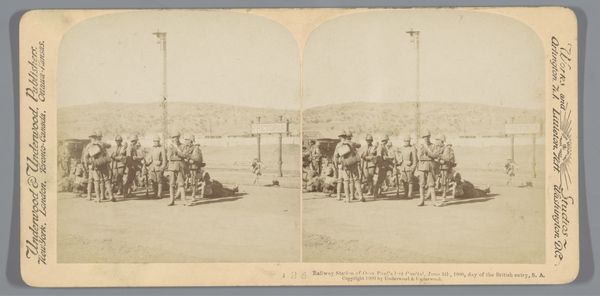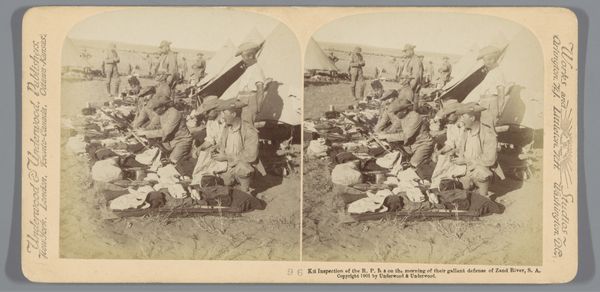
photography, gelatin-silver-print
#
african-art
#
pictorialism
#
landscape
#
photography
#
gelatin-silver-print
#
history-painting
#
realism
Dimensions: height 88 mm, width 178 mm
Copyright: Rijks Museum: Open Domain
Editor: This gelatin silver print, titled "Militairen bij De Aar in Zuid-Afrika" by Underwood & Underwood, captures a moment in 1900. There's a sprawling sense of both order and displacement; the soldiers are arranged yet the environment feels exposed. How do you interpret this work within its historical context? Curator: This photograph allows us to interrogate the visual language used to legitimize colonial power. Note the positioning of the figures, creating a sense of order and control within a foreign landscape. What power dynamics do you see at play between the represented and the represented-for in this visual framing? Editor: I hadn't considered that relationship so directly. It almost seems like a staged performance of colonial dominance for a Western audience, the "represented-for" you mentioned. Is there anything about the composition or style that reinforces this interpretation? Curator: Precisely! Consider the landscape photography traditions of the time, often used to exoticize and subjugate non-Western territories. Here, the wide, open space seems devoid of local presence, thus creating an “empty” canvas for colonial expansion. Does it bring to mind other forms of visual propaganda? Editor: Yes, that connection is becoming clearer. It also appears to me that the photograph’s very medium is a tool—silver gelatin prints were widely accessible at the time, suggesting a mass consumption of this particular colonial narrative. Curator: Absolutely. Photography democratized the gaze of empire, allowing a broad audience to partake in and validate the colonial project. The starkness of the image further reinforces this through its seemingly objective rendering. What I'm seeing here also are elements related to the historical understanding of what is truth, of documentation versus subjective capture. Editor: It’s interesting to see how what appears to be a straightforward documentation of a moment can actually reveal layers of ideological messaging. Curator: Exactly. It is crucial to engage critically with such imagery, decoding its underlying socio-political messaging. What new meanings emerge for you as you study it further?
Comments
No comments
Be the first to comment and join the conversation on the ultimate creative platform.
